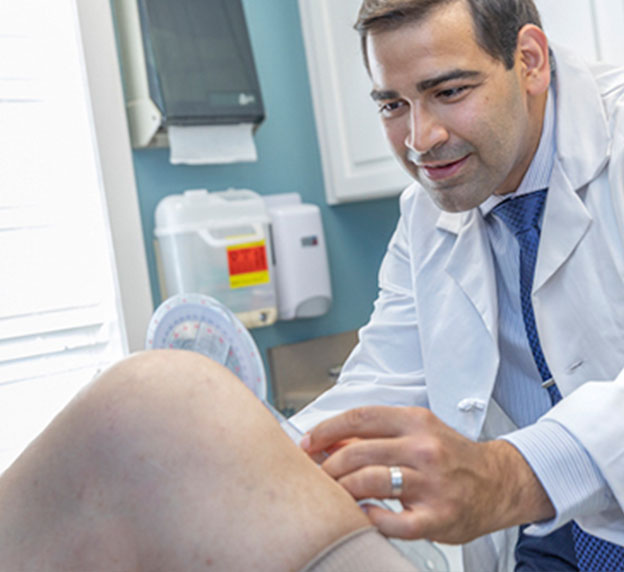Move Better on New Knees: Mako Knee Replacements
March 25, 2021
It’s one of the most common complaints orthopedic specialists hear from their patients — sore, stiff, painful knees — and the numbers confirm it. More than 30 million Americans suffer from degenerative joint disease, also known as osteoarthritis.
“As we age, the shiny white cartilage that cushions our knee joint begins to deteriorate, which can eventually leave bone rubbing on bone,” says Dr. Vandit Sardana, a board-certified, fellowship-trained orthopedic surgeon at Beaufort Memorial Orthopaedic Specialists. “Think of cartilage like the rubber on a car tire. The cartilage wears down a little every day simply from normal use.”
If we lived forever, it’s inevitable that everyone would suffer from osteoarthritis.
“While some of us may be fortunate to live many years with minimal arthritis, others may start feeling the effects in their 40s," Dr. Sardana says. "It’s usually in the mid-60s that the stiffness or pain can become so severe you’re ready to see a doctor to get relief.”
Conservative options include anti-inflammatory medications or cortisone injections, but those treatments only go so far. Over time, the pain could make it difficult to walk or even stand for any length of time. At that point, it may be time for a knee replacement.
Could a Joint Replacement Save Your Knee?
One of the most successful procedures in all of medicine, some 600,000 knee replacements are performed annually in the United States. In this procedure, also known as total knee arthroplasty, the diseased joint is replaced with implants designed to move much like a healthy human joint. While the term “replacement” sounds like much of the joint is removed and replaced, the reality is that only the surfaces of the joint are replaced.
“An analogy would be recapping a tire — the tire is not replaced, it is resurfaced,” Dr. Sardana says. “The same is done in a knee replacement. The diseased cartilage surface is removed and the joint resurfaced.”
Over the years, implant design and surgical techniques have continued to improve outcomes. Most recently, orthopedic specialists have turned to the advanced technology of robotics.
Mako: More Precision for Knee Replacements
One of these advances is the Mako Robotic Arm-Assisted Surgery System. Operated by the surgeon, the robot’s instrument arm provides a new level of accuracy for aligning and positioning the artificial joint. With the technology’s software, we can create a personalized pre-operative plan for the patient and implant the prosthetic knee components with greater precision, with the goal of better function and more natural movement.
It is important to understand the robot does not perform the surgery, make decisions on its own, or move without the surgeon guiding the robotic arm. First introduced in 2006, the Mako Robotic Arm-Assisted Surgery System has been used around the world with great success.
Using a CT scan of your joint, the surgical system software generates a 3D virtual model of your unique anatomy. The surgeon uses this model to determine the optimal size, orientation and alignment of the implant. In the operating room, the surgeon can make adjustments to the preoperative plan to further customize the implant’s position and balance. The robotic arm is guided to remove the diseased bone and cartilage while preserving the healthy bone and ligaments around it.
Read More: Finessing Knee Replacements With a Robotic Arm
A virtual boundary established by the robot keeps the surgeon within the joint, which reduces irritation to the surrounding soft tissue and, potentially, pain after surgery.
“Much like balancing a car tire, proper balancing of a patient’s knee is important,” Dr. Sardana says. “The Mako system’s ability to allow us to dynamically balance each patient’s unique knee is one of the key features to provide a knee with improved function, and it has the potential of extending the life of the implant.”
Total knee replacement surgery typically involves a one-night hospital stay. Patients usually are walking the day of their surgery and can return to most daily activities three to six weeks following surgery.
Interested in learning more about Mako knee replacements? Request an appointment with one of our orthopedic surgeons in Beaufort, Okatie and Varnville.

